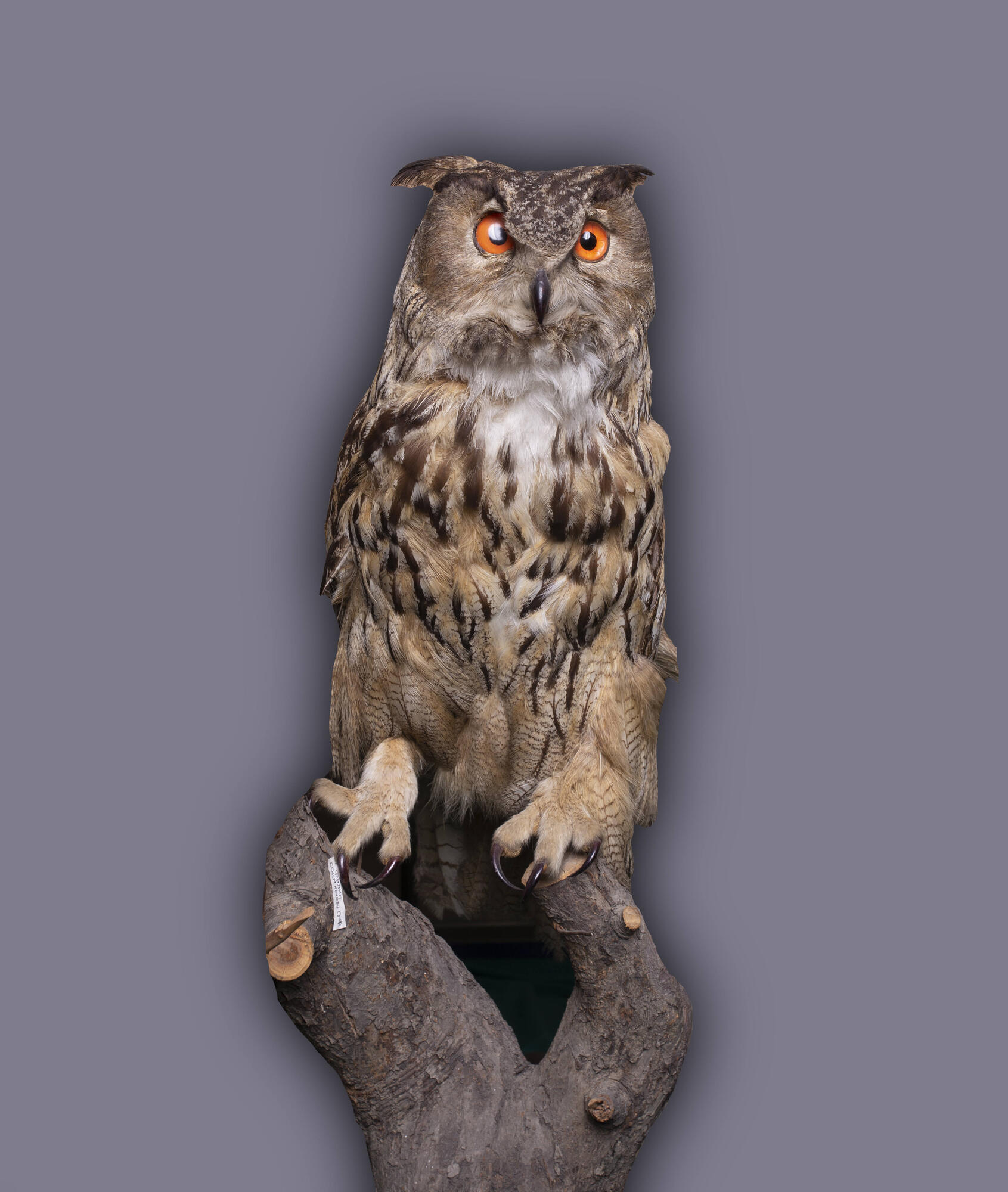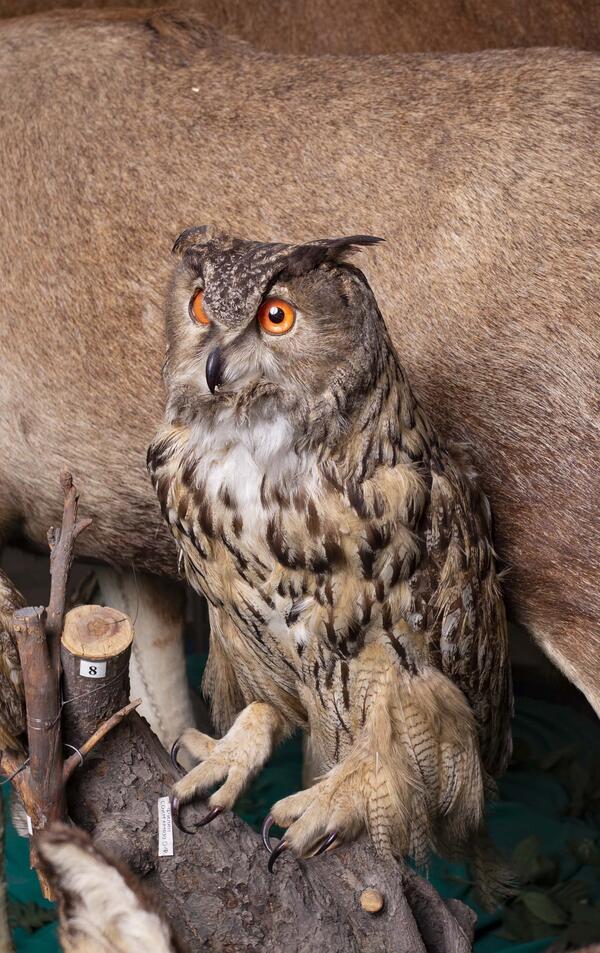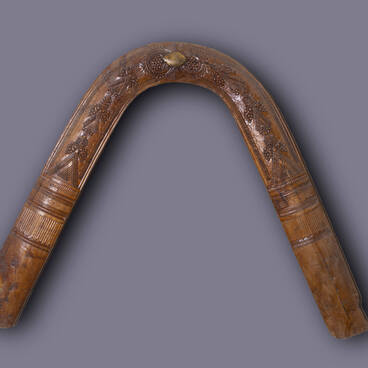The eagle-owl (Bubo bubo) is a bird of prey in the Strigidae family. It is one of the largest species of true owls. Its body length is 60–75 cm, wingspan — 160–190 cm, weight — 2.3–3.2 kg. Females are larger than males. The owl is mainly yellowish-brown with large longitudinal marks and a black transverse striped pattern. The microstructure of the feathers forms a “fluffy” surface, reducing the noises created by air currents during flight, so the flight of owls is silent. On its head an eagle-owl has large bright orange eyes and clearly visible long tufts of feathers — the so-called “ears”, which the bird can raise or lower. The head is movable and can be rotated 270 degrees. The legs are strong and plumed down to the claws.
The eagle-owl inhabits a large territory of Europe and North Asia, and its range covers almost the entire territory of Russia. It can be found in forests, steppes and even deserts, in mountains up to 5,000 m above sea level and is well adapted to the plains. The owl is listed in the Red Book of Russia. The eagle-owl is a crepuscular and nocturnal predator. During the day, it is inactive. Eagle-owls spend most of their lives alone. Even if a female and a male live in a shared area, each has its own shelter and each hunts independently.
The eagle-owl is a nocturnal predator. It hunts and eats the most diverse prey: mammals, birds, frogs, fish, invertebrates. Couples are created once in a life. In February and March, the female lays 2–4 white eggs. There are no nests; eggs are laid directly in a small hole in the ground. The female owl broods for 34–36 days, and the male feeds her during this period. The newly hatched nestlings are covered with thick light fluff, and their eyes are closed. The eyes do not open until 7–8 days later.
The voice of an eagle-owl is loud and can be heard up to 4 km away. It is a two-syllable “woo-hoo”. Male and female voices differ in tone. The song of the male may be similar to a chuckle, a groan, or a cry. In the night forest, all this sounds frightening, that’s the reason the people nicknamed an owl “pugach” (the one who frightens).
The eagle-owl inhabits a large territory of Europe and North Asia, and its range covers almost the entire territory of Russia. It can be found in forests, steppes and even deserts, in mountains up to 5,000 m above sea level and is well adapted to the plains. The owl is listed in the Red Book of Russia. The eagle-owl is a crepuscular and nocturnal predator. During the day, it is inactive. Eagle-owls spend most of their lives alone. Even if a female and a male live in a shared area, each has its own shelter and each hunts independently.
The eagle-owl is a nocturnal predator. It hunts and eats the most diverse prey: mammals, birds, frogs, fish, invertebrates. Couples are created once in a life. In February and March, the female lays 2–4 white eggs. There are no nests; eggs are laid directly in a small hole in the ground. The female owl broods for 34–36 days, and the male feeds her during this period. The newly hatched nestlings are covered with thick light fluff, and their eyes are closed. The eyes do not open until 7–8 days later.
The voice of an eagle-owl is loud and can be heard up to 4 km away. It is a two-syllable “woo-hoo”. Male and female voices differ in tone. The song of the male may be similar to a chuckle, a groan, or a cry. In the night forest, all this sounds frightening, that’s the reason the people nicknamed an owl “pugach” (the one who frightens).



